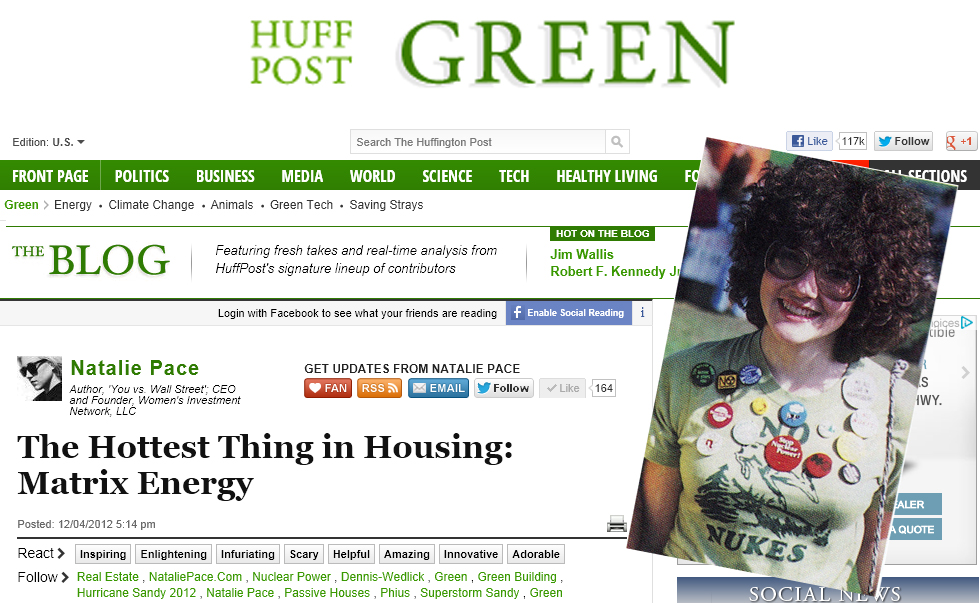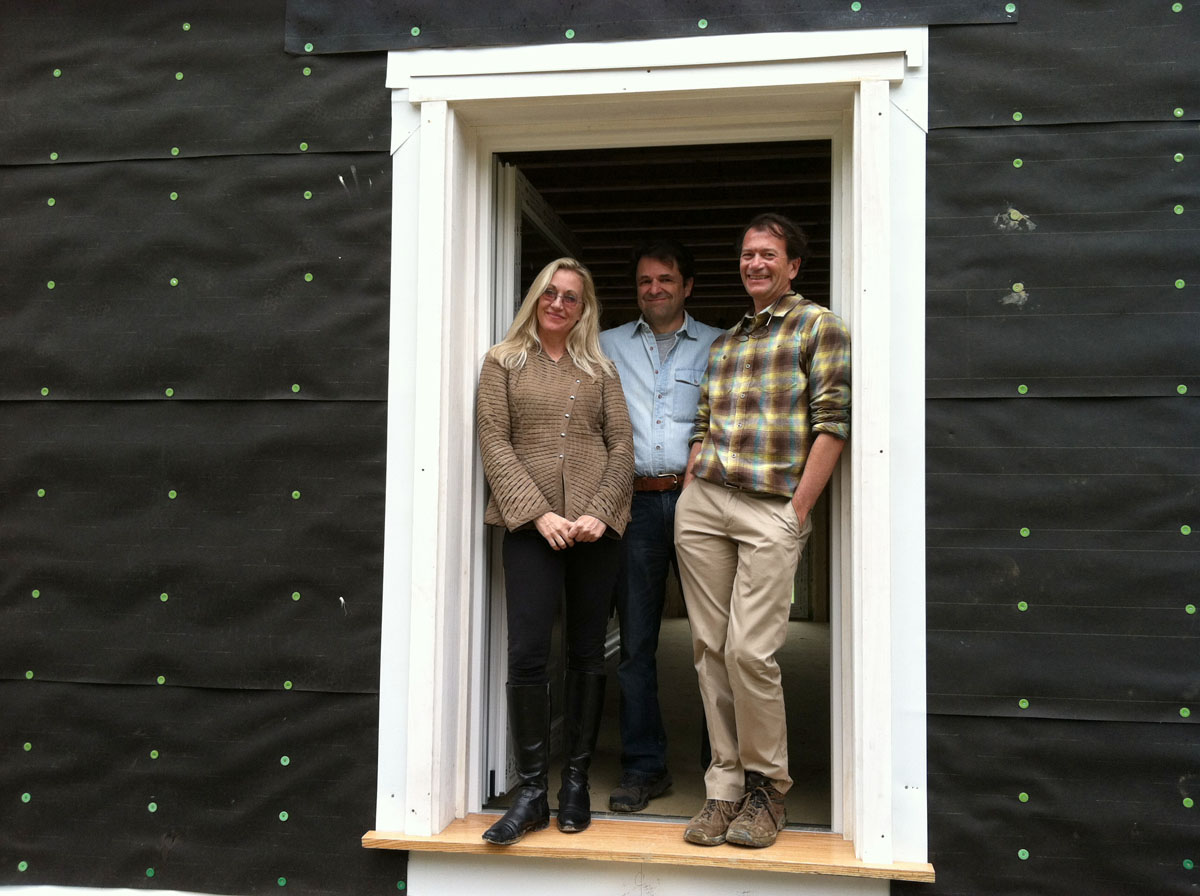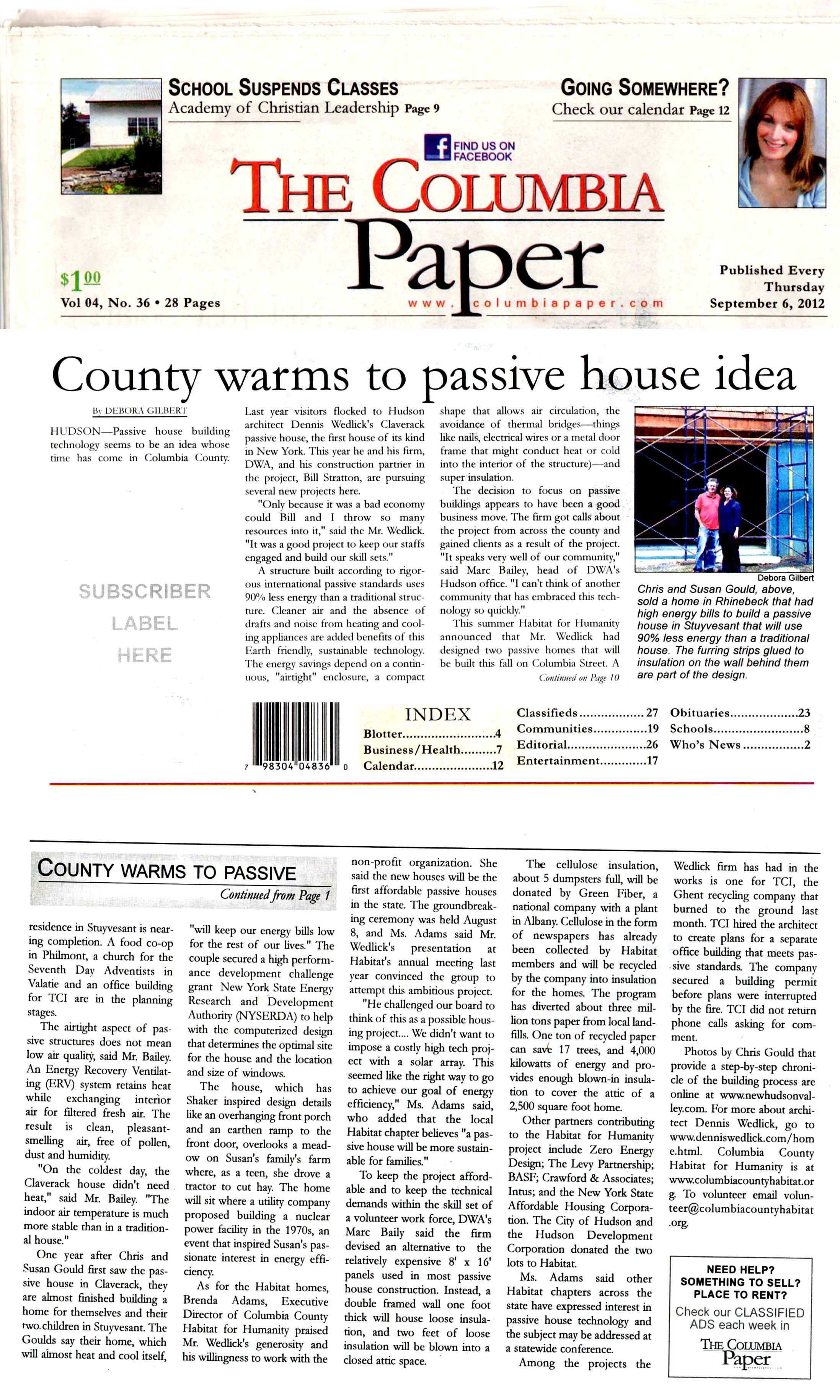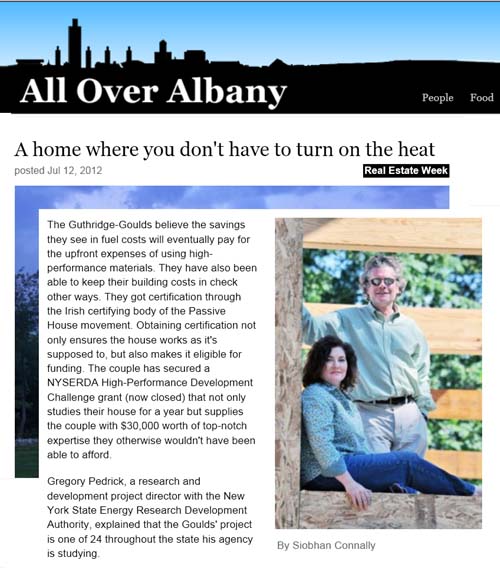Printed in the newspaper, and also online here >>
Five questions for July 18, 2012: Chris Gould and Susan Guthridge-Gould
Published: Wednesday, July 18, 2012 / By Siobhan Connally, The Record
Photographer Chris Gould and writer Susan Guthridge-Gould are building a certified passive home in Columbia County. They are documenting their family’s experience at www.newhudsonvalley.com.
Q: Why this kind of home instead of another kind of energy efficient home?
A: This Passive House is going to be extremely well-built, comfortable and beautiful — and it will keep our energy bills low for the rest of our lives. The house is designed by Dennis Wedlick Architect LLC and built by Bill Stratton Building Company. We are also benefitting from building science engineering from The Levy Partnership as part of a grant from NYSERDA, the New York State Energy Research and Development
Authority through its High Performance Development Challenge.
Q: How did you find Dennis Wedlick?
A: Susan heard about Dennis Wedlick’s Hudson Passive Project through her research into green building and some time ago we attended an open house in Claverack, NY, which is about 30 minutes from where we are building. We did a lot of research into a very DIY approach and called a few architects that we admired. Dennis Wedlick and his team, including Brian Marsh, have created a striking home that conserves energy by design.
Q: Construction of a house of this nature is costly right? Why is it worth it?
A: Any new construction is costly so why not take the opportunity to build the best you can? A Passive House can recoup its costs over the long-term because it requires minimal heating and other energy expense. It relies on insulation, sunlight and an airtight exterior. Going the extra mile to build this way is worth it. For our family in
particular, there’s also the satisfaction of building an energy-efficient home
to the Passive House standard on a site where utility companies wanted to build
a nuclear power plant in the 1970s. Chris will do a lot of the interior finishing
himself to keep costs down.
Q: What were the things you considered drawbacks and how did you overcome them?
A: We had to make some choices to build this way. We are building a smaller house that is very well-designed for living. We can’t have an indoor fireplace or cook with gas and we didn’t want to pierce the airtight envelope for a dryer vent so we have a compact condensation dryer.
Q: What inspired the design of your house?
A: The Shakers were all about quality craftsmanship and simple, efficient design, so it’s a perfect style for a Passive House. Several Shaker villages are nearby. After looking at countless books and online plans, we drove past a Shaker barn and said, that’s it.
# # #
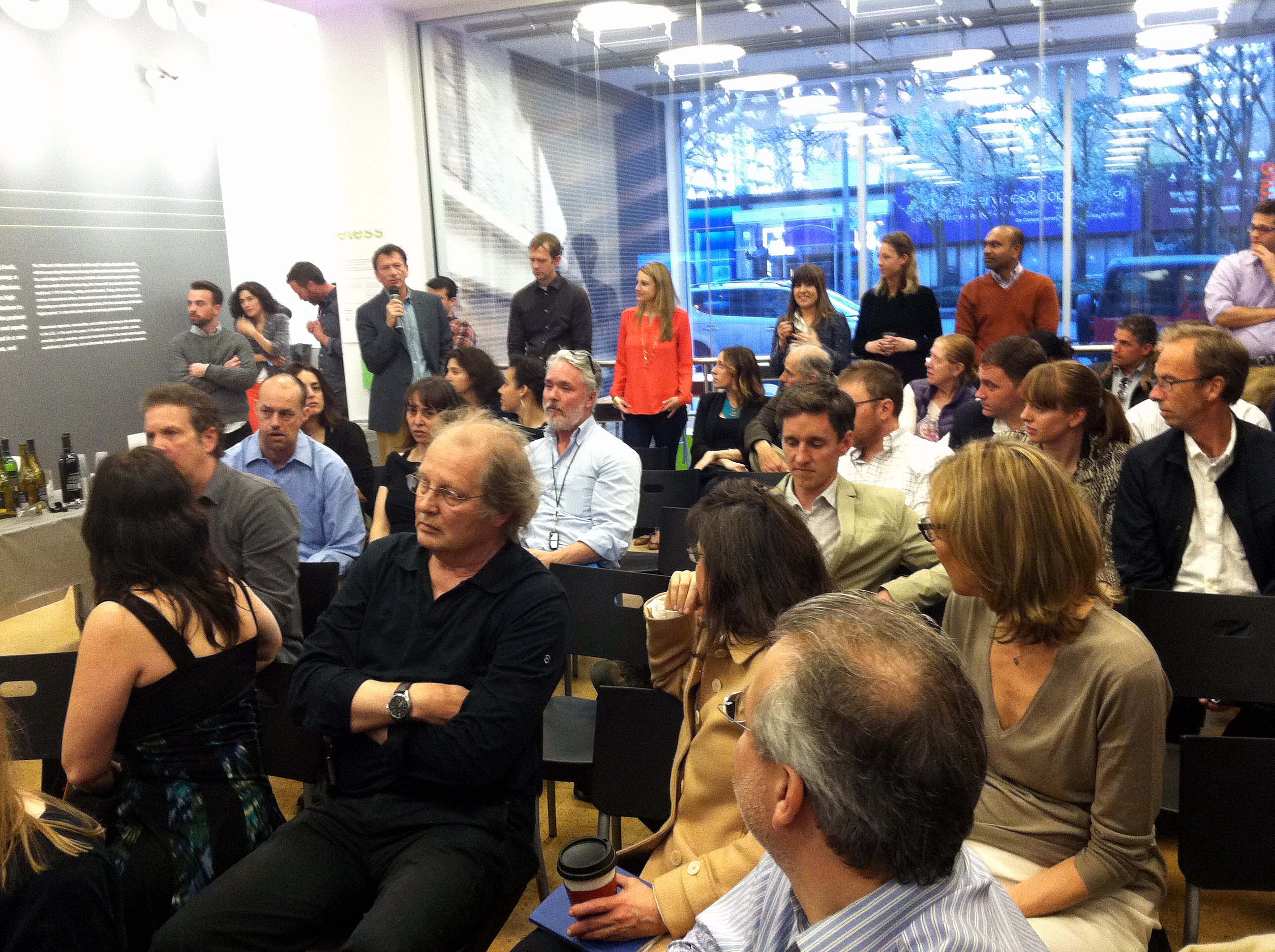 What’s going on in Columbia County? Six very different building projects are applying the world’s highest energy standard under the care of BarlisWedlick Architects in a rural upstate New York community where kids raised on apple orchards and dairy farms attend schools with names like Ichabod Crane. BarlisWedlick presented the six projects at an event organized by New York Passive House April 17th at the Center for Architecture in Manhattan.
What’s going on in Columbia County? Six very different building projects are applying the world’s highest energy standard under the care of BarlisWedlick Architects in a rural upstate New York community where kids raised on apple orchards and dairy farms attend schools with names like Ichabod Crane. BarlisWedlick presented the six projects at an event organized by New York Passive House April 17th at the Center for Architecture in Manhattan.


